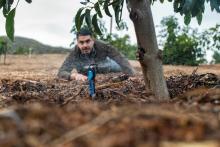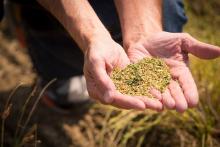
Seven out of every ten acres of our Nation's land is privately owned. Helping farmers, ranchers and forestland owners improve the health of their working lands helps protect our natural resources while helping to ensure the longevity of American agriculture.
The Conservation Technical Assistance program (CTA) helps our customers take advantage of opportunities and address, concerns, related to the use of natural resources on their lands. The Nation benefits from our customers' conservation stewardship with improved agricultural productivity; cleaner, safer, and more dependable water supplies; clean air; abundant wildlife; enhanced recreational opportunities; tranquil and scenic landscapes; reduced damages caused by flood, fires, and other natural disasters; and an enhanced natural resource base to support continued economic development.
In addition to one-on-one assistance supporting our nation’s farmers, ranchers and foresters, the CTA program has led to the following advances in agricultural conservation:
- New technologies and conservation practices to address emerging challenges that result from greater scientific understanding as well as an increasing number of Federal, State, and local laws and policies on environmental quality that place new requirements on landowners and land-users.
- Inventory and evaluation of soil, water, animal, plant, air, and other resources to help landowners and managers make land use, environmental, and conservation treatment decisions and help them in applying and maintaining conservation practices.
- Design, layout, and evaluation of over 167 potential conservation practices.
- Development of suites of practices including management alternatives and cultural practices needed to ensure all resource issues are addressed and treated at the appropriate level of conservation.
- Area-wide, community or watershed plans, supported by local stakeholders, which identify high priority resource concerns and identify the methods used to address the concerns and the source of potential funding.
- Educational and informational workshops and tours highlighting local conservation activities.




